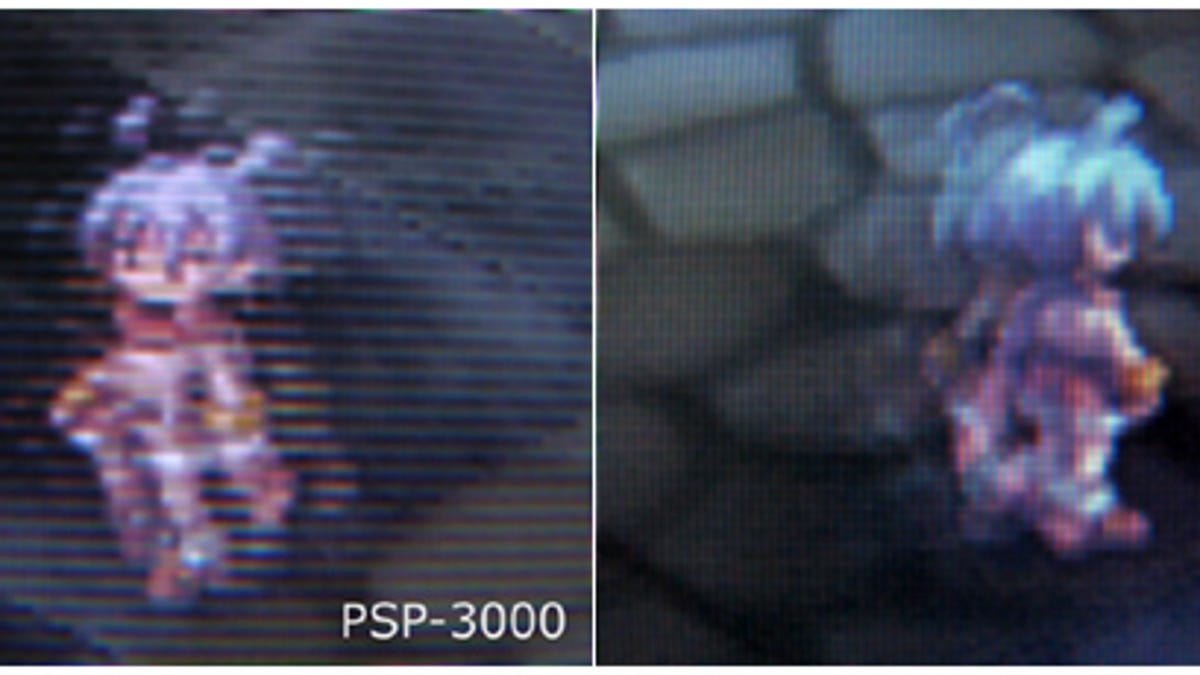Sony responds to PSP 3000 screen issues
The new Sony PSP exhibits on-screen jaggies that bother many users. Sony says it's a result of the anti-ghosting feature--but is the cure worse than the disease?

This post was updated Monday at 12:06 p.m. PDT to include SCEA's official statement on the issue.
The PSP 3000 is equipped with an updated screen, which--according to Sony--reduces glare, offers better color reproduction, and reduces pixel ghosting. Now that the models are hitting retail, however, some users are complaining that the supposed improvements are actually a step backward, introducing artifacts in the form of visible scanlines and jaggies on the screen.
When queried on the issue, Sony's Japanese headquarters (SCEI) is said to have replied, "Since this phenomenon is caused by hardware characteristics, there is no plan to fix it with a system software update." (That's as reported on Engadget Japan, and translated by its sister site, Joystiq.)
We've reached out to Sony's U.S. arm, SCEA, who provided us with the following statement:
On some occasions, scan lines may appear on scenes where brightness changes drastically, due to the hardware features of the new LCD device on PSP-3000. Installed with this new LCD device, PSP-3000 offers more natural and vibrant colors on its screen, but the scan lines have come out to be more visible as a result of improving response time to alleviate the afterimages on PSP-3000. Since this is due to hardware specification, there are no plans for a system software update concerning this issue.
Having a PSP 3000 on hand, here's what we'd say: the issue definitely exists, and is more noticeable in scenes with a lot of movement (on games or video playback). Likewise, it's more irksome to some more than others. Still, that's little comfort for someone who's paying between $170 and $200 for what's billed as the latest and greatest PSP system to date.
We're continuing our evaluation of the PSP 3000 with the screen issue in mind, and will update our review accordingly. In the meantime, any interested buyers should hold off on taking the plunge on the PSP 3000--or at least make sure to get a hands-on demo in the store first.
(Source: Engadget Japan via PSP Fanboy via Joystiq)

